-
Posts
790 -
Joined
-
Last visited
Content Type
Profiles
Forums
Gallery
Events
Posts posted by JerryTodd
-
-
Bravo! I'm always on the lookout for ingenious ways to handle sails with the least amount of cost, tools, and engineering.
-
-
-
I build my hulls in a sort of Hahn method, that is the frames are extended up to a common line and fastened to a building base board until the hull is planked. This backbone building board keeps everything aligned until there's enough structure to do it itself. You might add extensions to the frames to accomplish that, and unless it's a horseshoe, you might still use that keel you have.
-
I have now started the painting process. First was the overall gray with the black boot stripe. when this kit was released, it was common to have them with flat bottoms. The explanation was that it was part due to Defense Department censoring and part for the ease for children to sail across the living room floor. I plan to build up the base and put the hull in a sea of Gesso, like my Oriskany.
Very nice. My dad was on the Lake Champlain from 56-61. She retained the straight deck to the end. After mom and dad split up, mom still liked sailors, and was dating a fellow from the Lex while the ship was based at Quonset with the Essex. I got a ride in the back seat of a Skyhawk around that time.
-
The thumb thing, BTW, is a thumb stall. It's not so much to protect the thumb as to seal the vent. When the sponge or rammer is sent into the barrel it pushes air and you don't want that going through the vent as it can ignite left-over embers and cause the new cartridge to ignite as it's rammed home.
The thumb-stall is a very important safety job and isn't just laid on the vent. It's pressed on and twisted so the tip of your thumb is pointed at your right hip with your elbow pointed to the right as you face toward the muzzle.
-
setting and brailing sails remotely almost always involves drums and winches which means there must be a full loop with constant tension or something will snag and jam or break - ie: downhauls pulling as haliyards let out equally. There are ways of dealing with all of this, but it requires an increasing amount of mechanisms below to do the job, and this model just isn't that big and has a lot of structure in it taking up space and weight. Add to that designing deck access to get at and service those mechanisms that's watertight.
If it means that much to have this feature, you might attach the tops'l to the gaff and it's haliyard hauls gaff and course together, and they come down together. It won't be scale and eliminates the gaff throat and peak haliyards (the tops'l itself replaces those functions), but it would get the job done simply and efficiently.
-
I think you'd need mechanical fastenings for ebony
-
Gaff tops'l I, as you say, treat as an extension of the course, treat it all as one sail. Stays'l that have to cross a stay are another matter. Most models I've seen don't have stays'ls, and those that do either keep the clews above the stay, and often just don't bother with controlling the sheets, or just sheet them to the centerline and leave them that way.. One idea I gave some thought was a bit of elastic that would raise the clew just over the stay when the sheet was eased, but this too may be more trouble than it's worth.
On Pride I'm leaving off the fisherman stays'l because it would interfere with the fors'l far too much and is just too complex to try to handle remotely on that rig.
Trained squirrels, BTW, are also not feasible as they tend to gnaw on the model and fill the hold with nuts.
More details on Pride's control systems will appear in my MSW build log for her, rather than clutter up Bedford's log.
I've never used a bilge pump. I usually toss a feminine napkin in the bilge to soak up anything that gets in there and leave the hatches open for a while after sailing to let everything dry. Anything catastrophic a bilge pump wouldn't keep up with anyway. I also sail in salt water which little pumps don't stand up to for long.
- captainbob and fnkershner
-
 2
2
-
Here's a quick post with overlapping sail sheeting ideas, just tossed together...
Any one that sails knows when tacking, simply put, you let fly the lee sheet at helms-a-lee and take in the new lee shet after the heads'ls across the wind/centerline.
Accomplishing that in a model isn't as easy as it sounds. For one thing, remote set-up don't tend to work well with slack. Slack lines tend to snag things and there's no one aboard to clear these snags when they occur. There's also the issue of space in the hull and access for installation, maintenance, and adjustments. Servo arms long enough to pull the required length won't usually have the room in the hull to do it. Winches don't have this issue, but have issues all their own - especially with slack.
Typical way of handling overlapping sails with a winch from Dan L:
A servo arm set-up from the late Jimmy James:
A two servo design. One servo pulls the sheet to port or starboard, the second servo moves the first servo itself to let in or out the sheets, from someone on Model Boat Mayhem forums:
My playing with the above idea, but with one servo. Instead of a servo sliding the other one fore and aft, the servo slides itself via a line to the other side of the arm.
The sliding sheet: the sheet slides through the clew until a knot pulls it over the stay. Sheet doesn't require a lot of tension if used with a servo arm, if with a winch, that's another issue
Someone posted this on RCGroups a while back and it looked really promising to me, but...
I've mocked this up on the bench and couldn't get get a pull of much length. It's also tough to start the arm from center as the servo hasn't as much leverage.
Trying to make this work within the space available in the hull hasn't been successful but I'm convinced something along this line is the answer.
-
On RC models you'll find a great many modelers don't want to deal with the mechanics of overlapping jibs; that is having to drag the heads'ls across the forestays.
One manner of dealing with this is the clubbed jib, as shown above. This may work well for your forestays'l, but the jib is another matter.
Some deal with this by raising the clew of the jib so it doesn't actually overlap the forstays'l and passes freely from side to side clear of the stay. This is sheeted through a ring made-off to the forestay where the clew crosses it and run down to the bowsprit and back to the servo in a way that doesn't interfere with the forestays'l. The jib then actually sheets to the forestay.
Another option that may work for you is a continuous loop type sheet that runs from a winch or shuttle set-up, through the clew of the jib, and back to the other side of the winch/shuttle. A pair of knots in the sheet on either side of the clew grab the sail and pull it over as the sheet in pulled. The knots are spaced so they sheet in the sail snug on either tack. This gives you a jib that overlaps per your sail plan and work better if the sheets go to the bulwarks/rails like the real vessel's instead of the centerline where modeler's tend to put them.
There are other ideas for dealing with overlapping jibs, but most require more mechanics to achieve, like two servos, etc. I've been playing with some ideas for my Pride because I not only have three overlapping heads'ls to contend with, but an overlapping fores'l, running main forestays, and running backstays - and darn little space in the hull to put a lot of mechanisms.
- Bedford, fnkershner and captainbob
-
 3
3
-
Add to that that any hole thru the hull should be over drilled, filled with epoxy, and then drilled to size so there's no chance of water getting to wood.
-
My build logs are back online and linked in my signature, I suggest the Macedonian as the best example; but simply put, I build a wooden hull, and glass it outside, resin it inside, all done. I build with scrap wood and planking cut from 1-by pine boards, usually 1/8" thick x 3/8" wide and 16" to 24" long. Cheap, but it gets the job done strong, fast, and light. You can fore-go the layer of glass, but even epoxied planking can open a seam with wood's movement unless you do a proper cold-molded hull, the layer of 4oz glass make's that point moot. My next hull will use balsa instead of pine in the same construction method.
$20 at Home Despot gets you a quart of poly resin and a couple of yards of 4oz cloth from DuckWorks will run maybe $15. You can't look at Gucci-System for less than $50.
Impress with your workmanship, not your wallet.
-
I build my hulls with Titebond III
-
The prior owner of my house used the shed for his band, and lined it with Homosote board, foam rubber, and carpeting. I pulled out the foam and carpet, but the Homosote walls were great for pinning things up on.
Constellation and a smaller Pride plan pinned up on the wall.
Pride's full sized sail patterns also got pinned up on the wall.
Macedonian on the wall and the bench.
Now I've moved and haven't re-set up my shop yet, but I do intend to leave a big wall space to continue this practice.
-
The 3D printed guns arrived in the post; 5 32 pdr carronades and 5 Blomfield pattern 18 pounders. These I'll make a mold from and cast the model's guns in resin - 5 at a time. 4 extra long guns will be modified a little to serve as Pride's six pounder tubes.
Be sure to click on the image for the larger version where you can see the details!
Constellation's pivot 10" shell gun and Ivan for scale (Ivan is 2" (50mm) tall)
Wooden turned tube and carriage for Pride.
HM's crest on the 18 pounders:
Ivan and the Macedonian's guns:
- Elmer Cornish, archjofo, fnkershner and 4 others
-
 7
7
-
I would have liked to cold-mold the hull, that is planking in layers of veneers basically making a boat-shaped piece of plywood, but veneer is hard to find and very expensive here in Maryland.
-
I level the surface the model sits on, in this case the build table. This is the base.
The waterline is marked at the bow and the stern. I measured up the sternpost from the heel for the aft mark, and propping the hull so that it was the right height from the base at a certain station, measured up the stem from the base for the forward mark. In the picture you see a stick under the keel holding the bow up. I measured from the heel aft, going forward on the plan to where the keel was the height of my stick above the baseline, 3/4" in this case, and simply placed the stick so it's aft side was at this mark on the keel.
The hull is then securely propped so that both marks are the same height from the base.
The hull is also leveled side-to-side using a bubble level - that's why the base has to be leveled first. If your construction was accurate and symmetrical, you should be able to measure from the base to some point up the hull and get the same measurement on either side.
You need a block the height of the water line minus half the width of the pencil. I cut the block to the waterline, put the pencil on it, and measured the distance between the two marks, and cut half that off the block. Check it and cut it till it's perfect. If you cut too much, shim it back up with card stock. Check the pencil at both fore and aft marks.
The block has to be large enough to be stable while you move it and for the pencil to rest on it securely. The pencil needs to be long enough to reach up under the bilges at the quarters without the block bumping the hull.
The waterline doesn't have to be struck in one movement. So long as the hull is secure from movement, the block rests flat on the base,and the pencil lays flat on the block (remember it's usual octagon shape here), it should be perfect no matter where you start. Note in the pics I actually struck it more than once 'cause I wanted it dark enough to see through the fiberglass that would cover it.
It's sounds complicated, but then a detailed explanation of tying a shoe lace would sound complicated too.
- JPett, PierreJean, East Ender and 2 others
-
 5
5
-
I use a fine permanent marker on my sails, like .001, and draw both sides, a little bit off to represent the width of the seam. Test it on some scrap before you commit.
There is a method where a portion of the cloth, outside the area of the sail, is colored in some fashion, and single threads are pulled through the weave to move the colored portion into the area of the sail. While the effect is impressive, it wastes an amount of cloth equal to the area of each sail. An alternate method is to run a bead of fabric glue above and parallel to the head and pull the threads at the seam locations down while bunching the sail up towards the head. Color these threads and unbunch the sail pulling the threads back in. This gives the same effect without the waste and in small scales is quite impressive.
Sewing seam lines is common, but in-my-opinion, nearly always looks out of scale, and typically causes unrealistic puckers in the cloth. It's difficult and tedious to do well.
On large scale models, like 1:16th, 1:6th, typically models of small craft; before it's cut, the cloth is Z folded at each seam and sewn. This is as close to a seam as you can get without it actually being a seam. At smaller scales, even 1:24th, it's near impossible for this method to appear in scale to the model.
Whatever method you opt for, success will depend on the quality of the cloth used and your patience. Most cloth used is hopelessly out of scale to the model they're made for - another reason I build in large scales.

-
-
I can't tell from the photos what you mean.
-
A fellow on the left coast, Tom Bowman, got wind of my Macedonian project and contacted me a while back. He's another big Hornblower fan and a fan of the British frigate as I am. He's also a builder of large scale working tanks from scratch - armored fighting vehicles that operate and are beautifully detailed.
I shared my Mac plans with him and he plans to build another Lively class boat, the Spartan for RC, but in 1:24 scale. Until then he's purchased and is detailing one of SC&H's Crusier class kits, also in 1:24 so Spartan will have a play-mate.
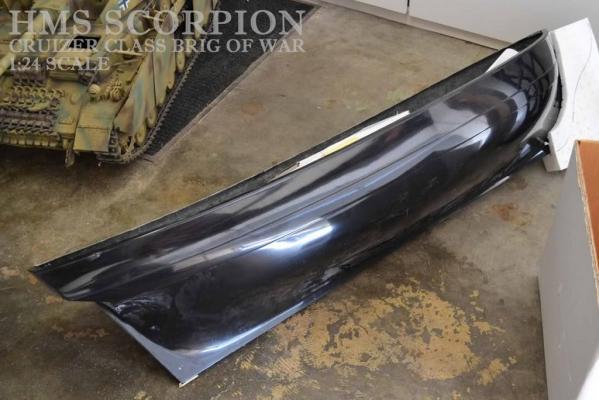 How the kit hull comes; note the tank pictured above in the upper left for scale
How the kit hull comes; note the tank pictured above in the upper left for scale 
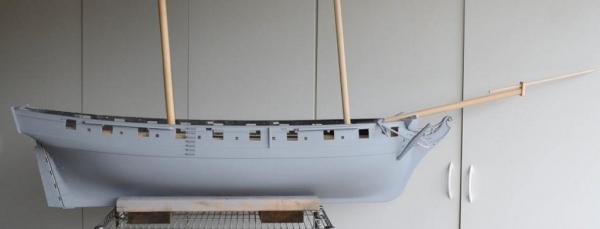 Where it is as of this posting; it's already becoming a beautiful model.
Where it is as of this posting; it's already becoming a beautiful model.Since Tom's modeling the guns for Spartan in SolidWorks to be 3D printed and used as masters to cast the rest, he's actually doing a set of masters in 1:36 for me to produce Macedonian's batter from; Blomefield pattern 9 pounders, 18 pounders, and 32 pounder Carronades.
-
On 9/23/2013 at 8:43 PM, ccoyle said:
I love the barkentine rig! It's one of my favorites.
I've always been fond of the "jack-a$$ bark" or hermaphrodite bark rig. It's a meld of bark and barkentine, or just a bark with a fore-n-aft main course.
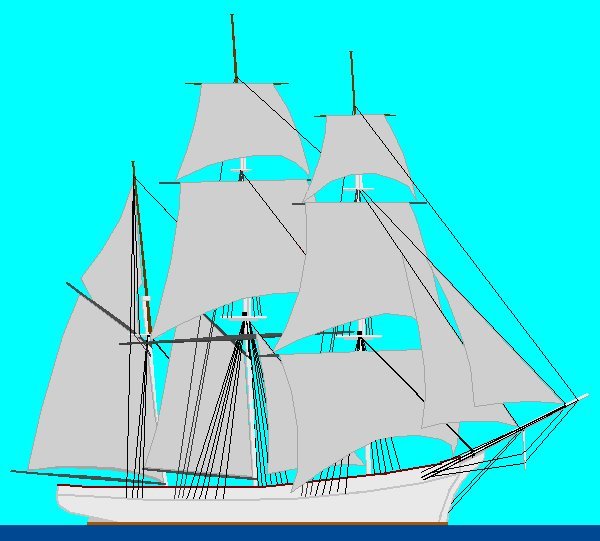 I did this sketch in 97 to show what I was thinking of building what would instead become Constellation.
I did this sketch in 97 to show what I was thinking of building what would instead become Constellation.
-

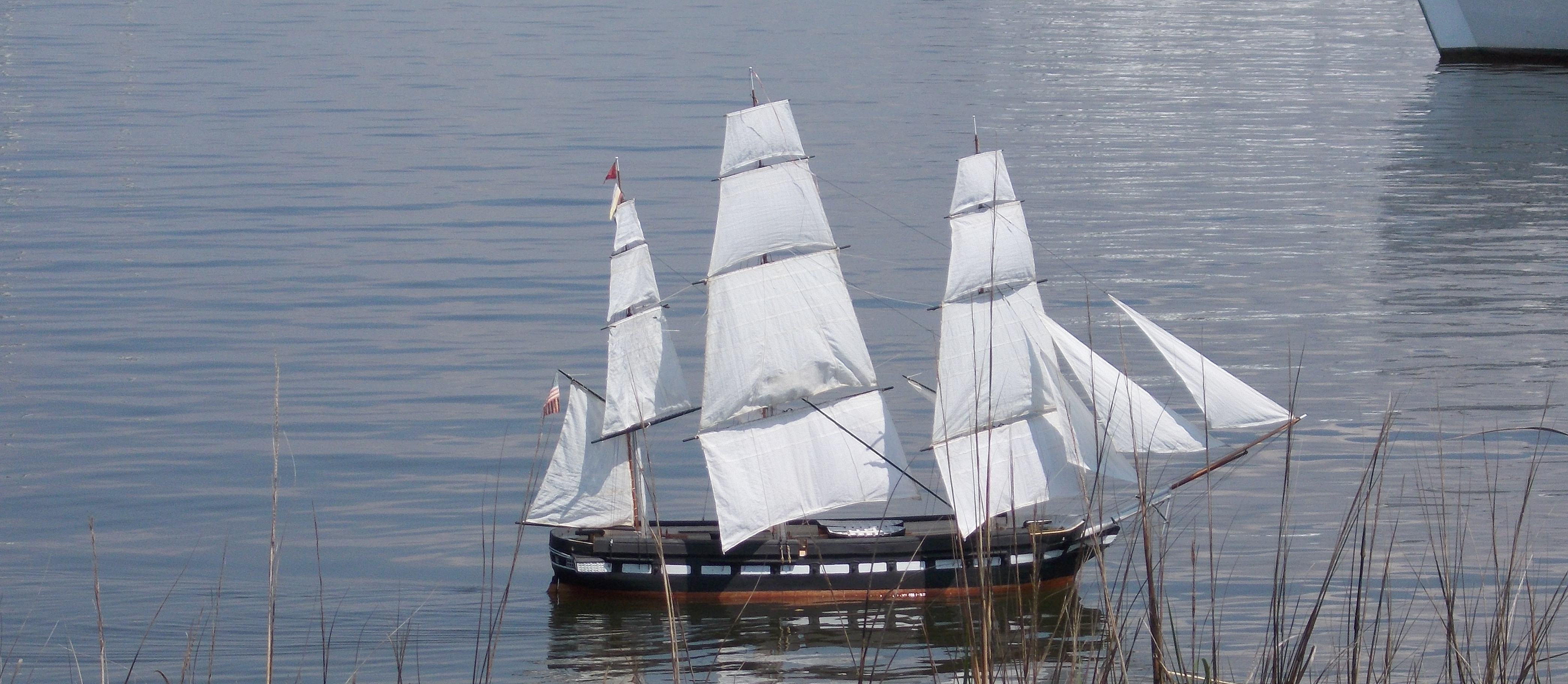

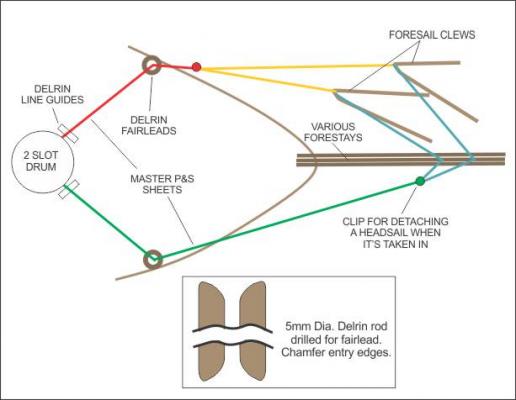

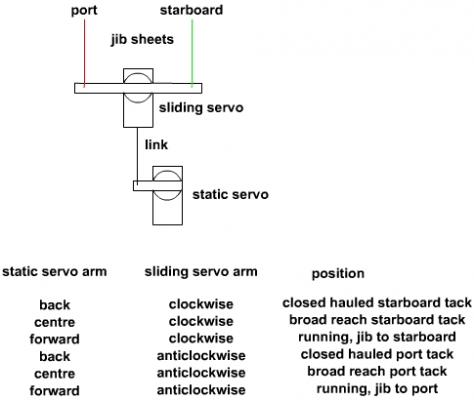


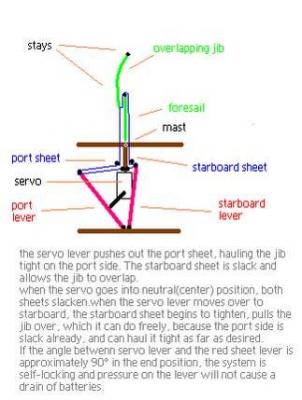
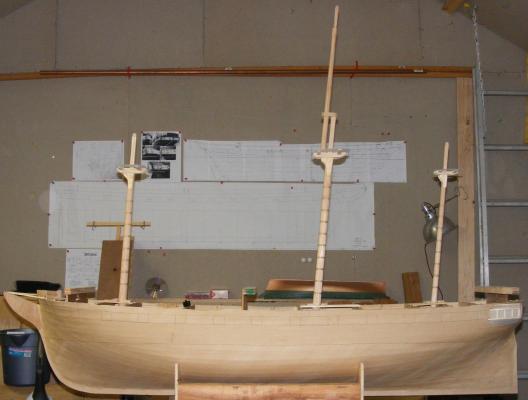
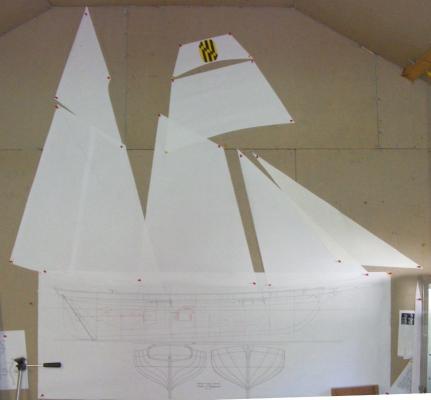
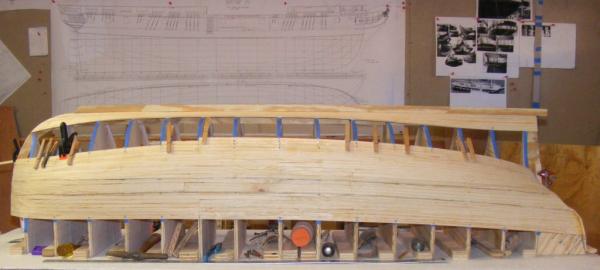
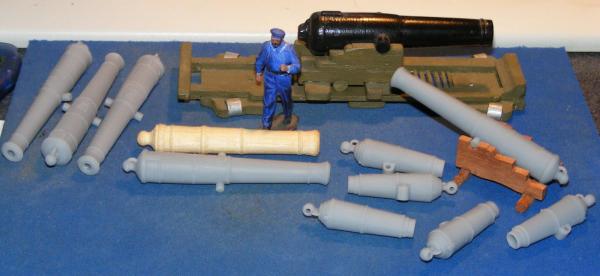
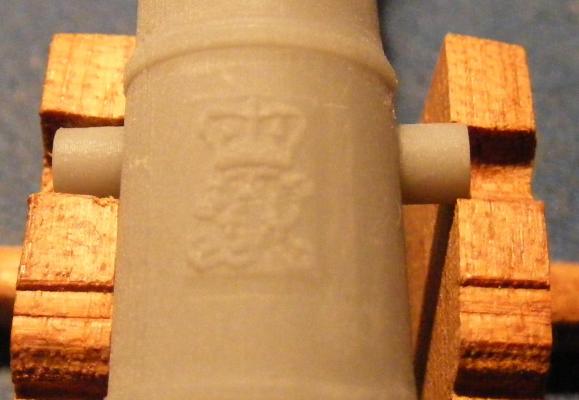
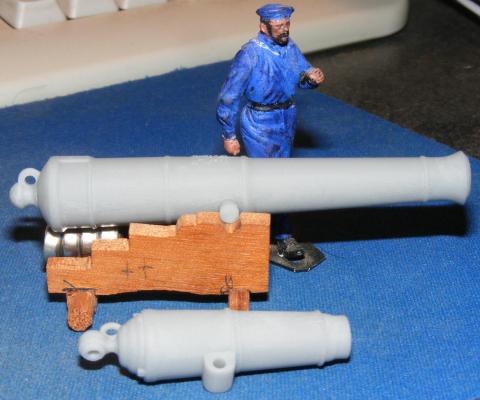
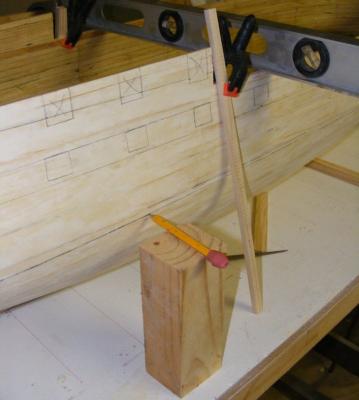
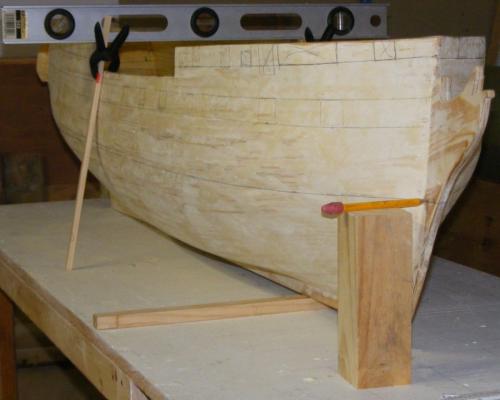
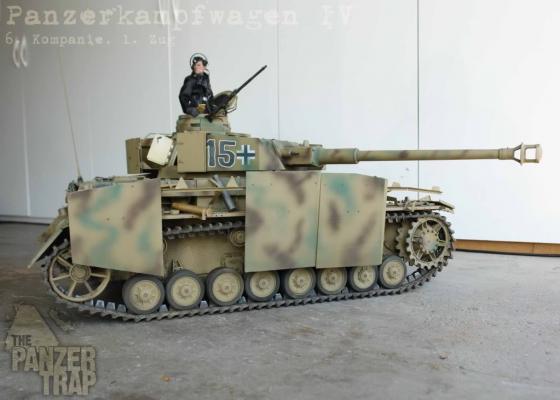
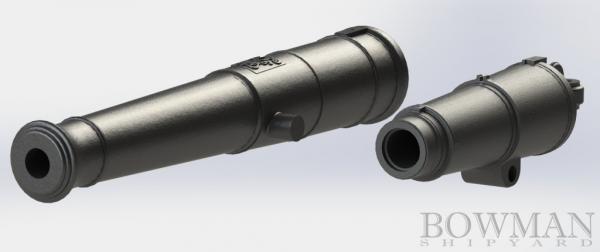
Chapman Frigate by bucknbarney - RADIO - Plank on Frame
in - Build logs for subjects built 1751 - 1800
Posted
He found me and the links are in my signature.
and the links are in my signature.